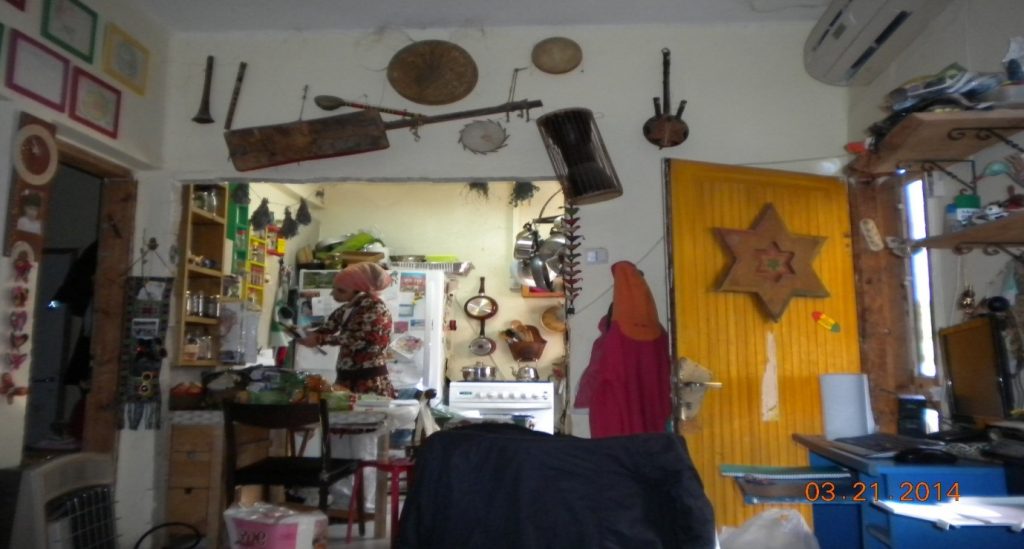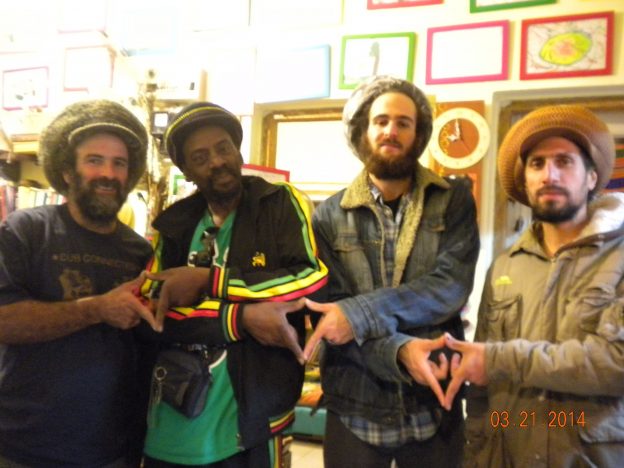By Hilde Capparella, PhD student in Religious Studies
My doctoral research focuses on diasporic and transnational contexts of Rastafari. I am interested in de-essentialising Rastafari, and over the next year or so I will be conducting fieldwork in Rome and London with different Rasta communities and groups. I see my approach as one that focuses on religion in motion, and it is an approach I began to develop when I decided to investigate Rastafari in Israel for my Master’s Thesis. In March 2014, I conducted two weeks of fieldwork in Israel, where I was hosted by a Rastafari family living in Ashdod.
Upon my arrival, I was surprised to see that their house was completely covered with Rastafari symbols and colours (see picture below). My senses were also submerged in the sounds of Reggae and Dub music playing in the background 24 hours a day. It is important to note that Rastafarianism appeared in Israel through books, radio, and television, promoting reggae music and culture. During my short stay, what amazed me was to hear how the Rastafari language (the Dread talk) was used and mixed with Hebrew in everyday life, creating a new form of language.
Through my fieldwork, the main question I wanted to answer was why they embraced Rastafari so passionately. Despite identifying as Jews, they felt Rastafari to be more flexible than Judaism. In addition, because Rastafari relies on the Levitical code of conduct, for them it is easier to embrace Rastafari practices and symbolism, as it is already, in a certain way, part of their culture.
The most significant and emotional event during my stay was my participation in the Sabbath. During this ritual, the whole family wore items with Rastafari symbols and colours. Whilst the parents were wearing the Tam (Rasta hat), their son was wearing a Kippa (Jewish hat) with Rastafari colours. During the prayer, they explained that because they embrace Rastafari they replace the Sabbath wine with grape juice, as Rastafarians cannot drink alcohol. They emphasised that, for them, Sabbath is a time to pray and stay with family and friends more than a time to go to the temple. In fact, after the Sabbath celebration, their friends came to visit them.
The picture at the top of the post was taken during that day. Just before to take the picture they all naturally united their fingers together doing the Rastafari gesture. This sign was first adopted by King Selassie, and symbolises Solomon’s Seal (or Star of David) to emphasise the King’s geneological link to King Solomon. King Selassie was the king of the Falasha, the Jewish of Ethiopia, despite growing up as an Orthodox Christian. Therefore, the symbol was adopted by Rastafari worldwide is used to signify their bond with Selassie. However, for Christian (generally Orthodox) or Jewish Rastafari, it symbolises also the link with the Selassie dynasty from David, to Jesus, to Selassie.
Through this short piece of fieldwork, I discovered a new blend of Rastafarianism and Judaism. As my doctoral research proceeds, I expect to expand on these findings.
Photos by the author.

